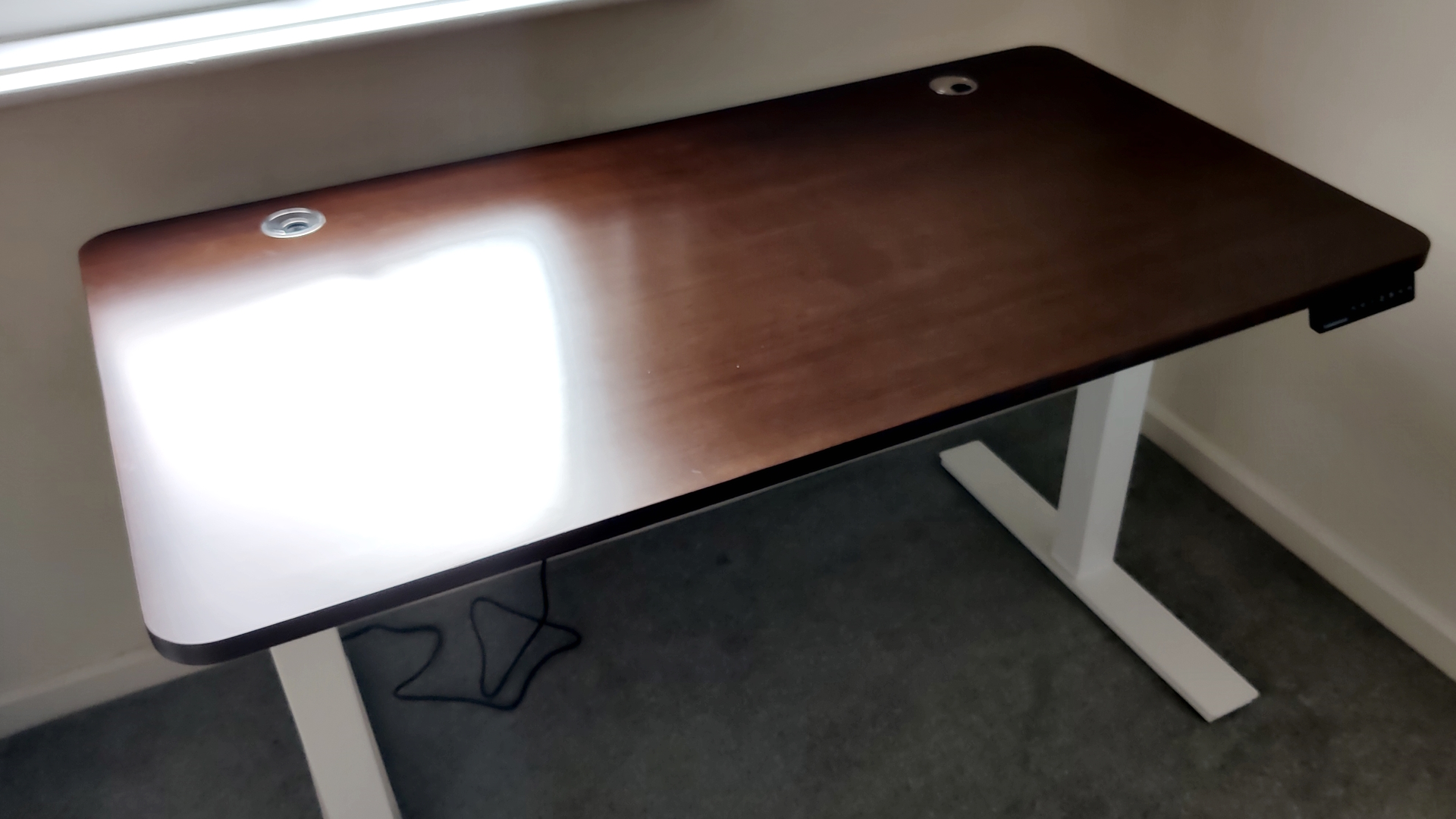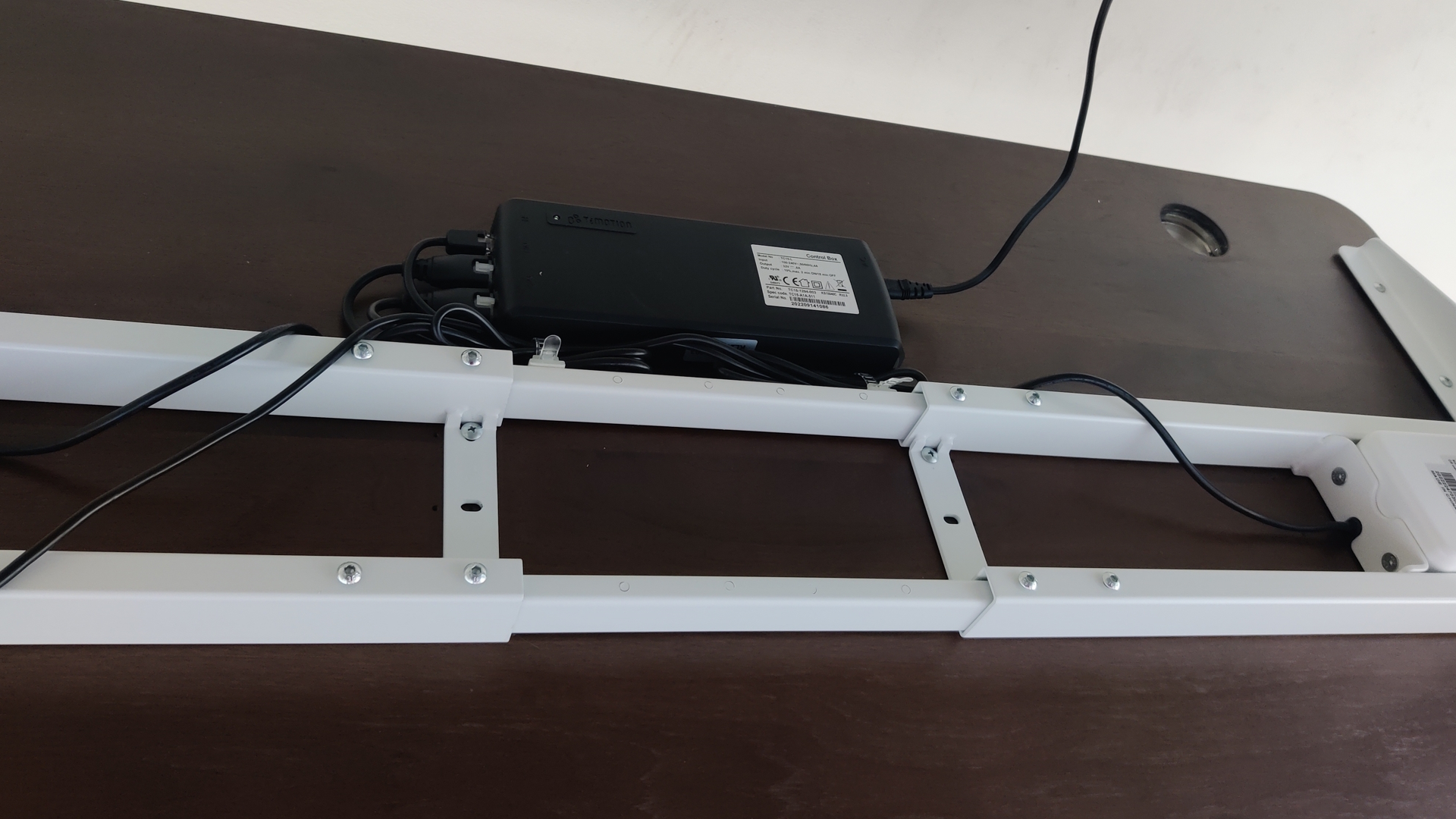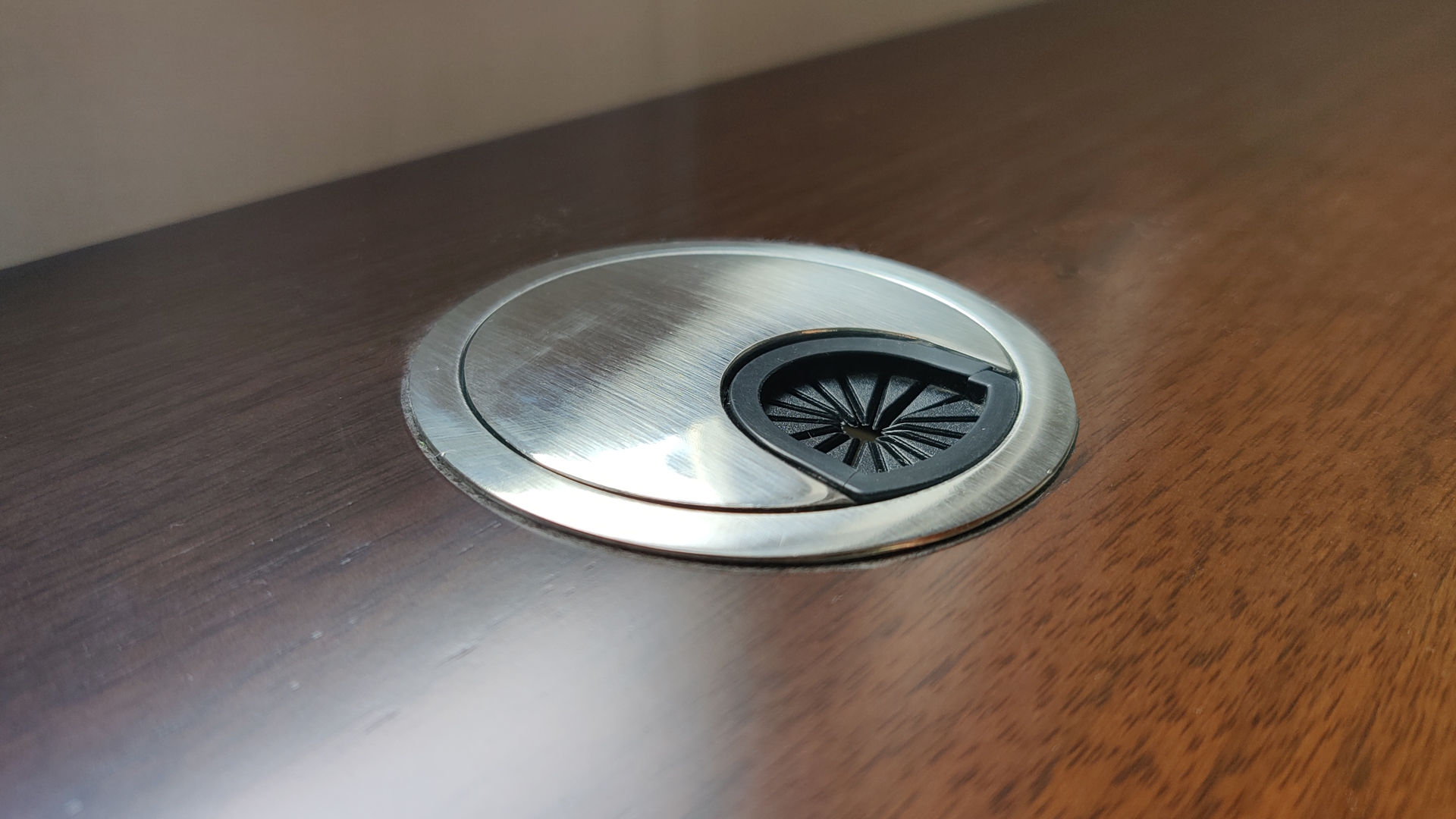Autonomous SmartDesk Core

The Autonomous site says the SmartDesk Core was “Bought by 2,100+ Microsoft employees”. That's almost 10% of the company, if my calculations are correct. And whether there's an entire floor at Microsoft headquarters rocking these babies, or a large chunk of the hivemind decided to go for the same desk for their home offices, I figured there's got to be something in it. So what can this desk offer that other standing desks can't? And what's so smart about it?
I've been sent the middling model. At 53 x 29 inches, it sits between a diddy 52 x 24-inch version, and a ridiculous 70.5 x 30-inch XL version. As a medium form-factor, the images on the site really don't do it justice. There's a great deal of real-estate here, more than enough for a couple of gaming monitors and my mid-tower PC.
There are a few frame colour options all for the same price, so you can mix and match them with the different worktop styles. The full desk along with standard black and white worktops retail at $599 for the medium, $499 for the smaller, and $949 for the large. The real wood look is going to set you back a little more, with white oak and walnut pushing the medium model up to $649, while the bamboo and dark bamboo versions add a full $150 dollars premium on top of the base colours.
Because, uh, bamboo is in right now?
SmartDesk Core specifications
Height: 29.4–48-inch
Weight support: 265–270lbs
Desktop dimensions: 43 x 24-inch min | 70.5 x 30-inch max
Warranty: 5 years frame | 1 year top
Price: $599 | £539
As for the UK, the options are a bit more limited. Only the medium desk is available for £539 in black and white, or £599 for the wood look. No bamboo here, sadly.
According to Autonomous “Even a complete beginner can have the whole thing put together in about 30 minutes.” It took me more like an hour by myself, and although the instructions admittedly warn that the process is a two person job at times, I feel my tardiness was partly down to getting stuck on the first instruction step. It wasn't worded all that well, asking me to simply get it in the “proper position”. The illustrations didn't help at all, so I had to really pause to think about which holes went where.
Moreover, aligning everything was a little harder than it should've been. Even once I'd deciphered the instructions, some of the holes were a bit misaligned.
(Image credit: Future)
Despite some of the screws having gone in at a slight angle it's now finally together and stands mightily in my spare room, and I can't fault it for material quality. None of the screws stripped as I fought with them, the vinyl that covers the warp-proof MDF is thick and not easily picked off, and the frame is sturdy even on thick carpet. Bashing into it with my chair doesn't send it rocking and spill my coffee everywhere, which is always appreciated.
Coiling the cables up underneath, I was able to neatly tuck them between the frame and the motor unit, and the included cable ties made it super easy to tidy everything up. While that and the two chrome wire holes on either side of the desk do win some points for cable management, it doesn't quite measure up to something like the Secretlab Magnus Pro XL's magnetic cable management solution. That said, cable management on a standing desk can cause problems when shifting positions—just when you think you've left enough slack, there go your fancy speakers.
Either way, the underside looks relatively neat from the get-go, the Walnut top is polished to perfection, and the corners have a gorgeous curve to them. The top edge isn't too sharp either, something the Arozzi Arena desk I'm now using sans mousepad does suffer from.

(Image credit: Future)

(Image credit: Future)

(Image credit: Future)
Overall the SmartDesk Core is a super sleek and stylish desk. It's certainly pretty enough to give the luxury $1,450 BDI Stance on our best gaming desk guide a run for its money. And while it doesn't come prebuilt, the SmartDesk Core comes in at less than half the price for a much larger model, even with the fancy walnut wood top. When it looks this good with a saving like that, I'm willing to overlook some holes in the featureset.
When it looks this good with a saving like that, I’m willing to overlook some holes in the featureset.
And yet, the SmartDesk Core manages to match the Stance at every level, only without the premium price tag.
The main thing I'm stumbling over is the name. I've spent the week trying to understand what exactly is smart about the desk. Other than remembering four distinct heights, it doesn't really fit the modern understanding of the word. There's no AI involved, nor is there an automatic collision sensing feature on the medium sized model. The company's other model, the Connect, does come with Bluetooth capabilities which seems to justify the nomenclature a little more, but otherwise don't get caught up too much on the name.
The SmartDesk core is a fantastic, stylish desk for the price, and although it was a little awkward to put together, and doesn't quite match the savings on something like the Flexispot EN1B—which does have a smart anti-collision feature—it's still worth a look as a cheaper alternative to the BDI Stance in the luxury standing desk market. Maybe not so much if you're a bamboo liker, or after the vast XL model, but I'd certainly pay the $599 for the standard model in its basic colours.
Heck, I'd even pay that little extra Autonomous is asking for the walnut look.




